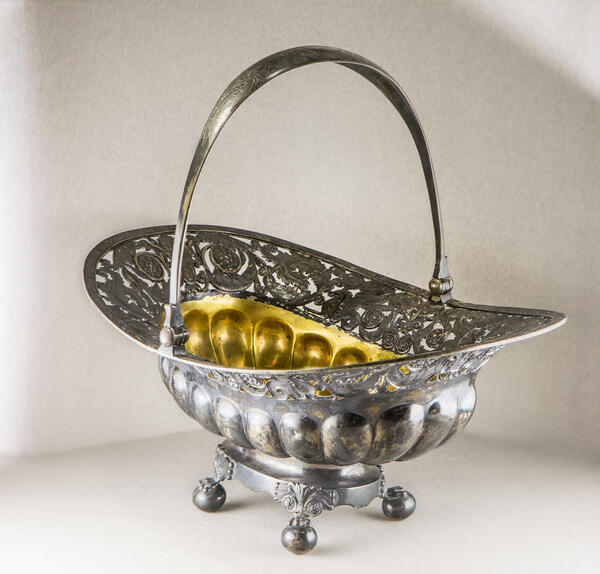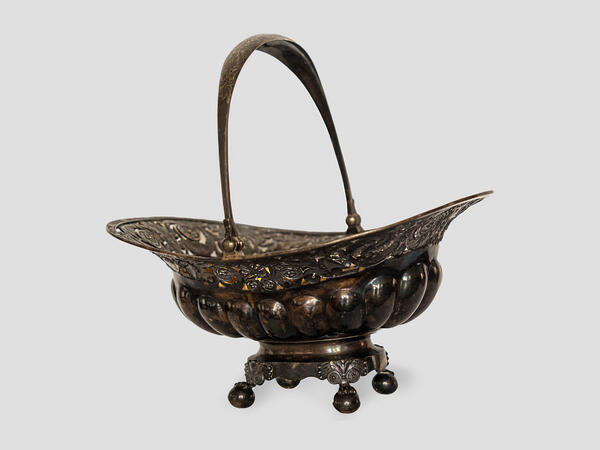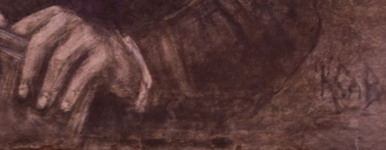This Empire-style biscuit dish with floral patterns and a figure of Pegasus was donated to the Penza Literature Museum by an employee of the Department of Ancient Russian Painting of the Tretyakov Gallery in 1985. The dish is believed to have belonged to Yekaterina Karamzina, the wife of the historian Nikolay Karamzin. In the 1920s, before leaving Russia, the descendants of the Karamzins left the dish to a distant relative for safekeeping. Most likely, this was the last place where the dish was used for its intended purpose.
Yekaterina Karamzina was known as the hostess of a literary salon, a remarkable phenomenon in Russian culture of the first half of the 19th century. According to the contemporaries, the salons run by women had a particularly appealing atmosphere. Prince Pyotr Vyazemsky explained that women “are good judges of intelligence… who attract and welcome intellectual thinkers.”
Thanks to this talent, hosts brought together representatives of the aristocracy, the nobility, and aspiring writers and helped all of them communicate with each other at ease. There was a custom of “treating the visitors to a guest”, that is, inviting an engaging person who could grab the attention of other guests and spark a conversation. There were also other intellectual “treats”, including art news, amateur theatrical productions, fresh epigrams, and fun charades. “Improvisations” were often actually prepared in advance to show off at such an event.
At the same time, the culinary treats served at such salons could be very modest. Anna Tyutcheva, the daughter of the poet Fyodor Tyutchev, recalled that Karamzin’s guests were served only strong tea with cream and thin tartines with butter but “found that nothing could be more delicious.”
In her literary salon, Yekaterina Karamzina welcomed Alexander Pushkin, Vasily Zhukovsky, Yevgeny Baratynsky, Fyodor Tyutchev, Alexander Turgenev, Pyotr Vyazemsky, and Mikhail Glinka. The guests could also enjoy “Demon” read by Mikhail Lermontov himself, and excerpts from “Dead Souls” narrated by Nikolai Gogol. For 20 years, “the most cultivated and educated part of society” met there. The literary critic Ivan Panayev ironically remarked that it was in this society that “literary talents got their diplomas.” Karamzin’s salons were the only ones in St. Petersburg where it was customary to speak not French but Russian.




